




Your support is critical to our success.
Accepted Scientific Name: Aloinopsis malherbei (L. Bolus) L. Bolus
Fl. Pl. Africa 26: 1035 1948
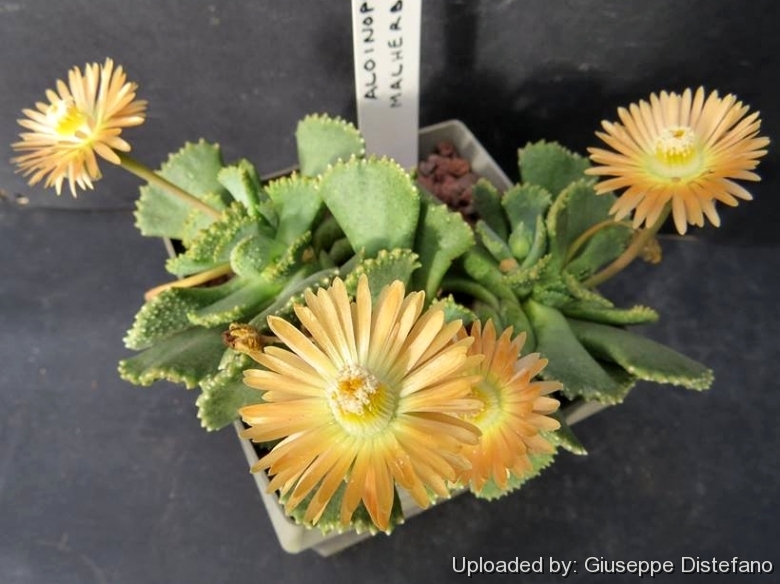
Origin and Habitat: Calvinia to Loeriesfontein and adjacent areas, Northern Cape on the border with the Western Cape. South-Africa.
Altitude: 800 - 1200 metres above sea level.
Habitat: It grows on shaly lower slopes, in flats or in crevices These are very low winter rainfall areas, around 125 mm per annum.
Synonyms:
- Aloinopsis malherbei (L. Bolus) L. Bolus
- Nananthus malherbei L. Bolus
ENGLISH: Miniature Blue Fan, Giant Jewel Plant
Description: Aloinopsis malherbei is a cryptic perennial-succulent with flat, bluish-gray, fan-like, spatulate leaves similar in shape and texture to Aloinopsis spathulata and Titanopsis calcareaSN|12599]]SN|12599]]. All these species have blunt tips to their leaves, which are densely covered with prominent white tubercles. Clumps of these plants thus resemble the limestone outcrops amongst which they grow. In the wild, these plants are often overblown by fine soil, only the leaf margins visible.
Habit: It forms a thick, truncate rootstocks broadening and splitting into several small branching rosette with erect leaves up to 5 cm tall at the top.
Leaf: 18-25 mm long, 4-5 mm thick at base widening to 12-22 at the apex, erect, flat and wide, very broadly spatulate to fan-shaped, the apex more or less truncate, blue-gray, waxy, with prominent white tubercles along the round apical crescent extending onto the lower side of the leaf. Both surfaces with a slight covering of warts.
Flowers: Flower stalks 20-25 mm long. Flowers ebracteolate, 16-20 mm in diameter, petals salmon to pink or pale brown, stamens forming a cone, yellow in upper half.
Blooming season: The flowers are produced from mid-winter until early spring.
Fruits (Capsules): 8-11 locular, nearly globose, with a fat central columella, valve wings basally broad, ending distally in awns or narrow wings, closing bodies big, blocking the exit of the locule.
Seeds: Almost round in outline, 1.2-1.5 mm long, 1-1,4 mm broad, dark brown, testa cells dome-shaped.
Bibliography: Major references and further lectures
1) Heidrun E.K. Hartmann “Illustrated Handbook of Succulent Plants: Aizoaceae A-E” Springer, 2002
2) James Cullen, Sabina G. Knees, H. Suzanne Cubey “The European Garden Flora Flowering Plants: A Manual for the Identification of Plants Cultivated in Europe, Both Out-of-Doors” Cambridge University Press, 11/Aug./2011
3) Burgoyne, P.M. 2006. Aloinopsis malherbei (L.Bolus) L.Bolus. National Assessment: “Red List of South African Plants” version 2013.1. Accessed on 2014/04/21
4) Doreen Court “Succulent Flora of Southern Africa” CRC Press, 01/giu/2000
5) Hermann Jacobsen “Lexicon of succulent plants” Littlehampton Book Services Ltd. 1974
6) Hermann Jacobsen “A handbook of succulent plants: descriptions, synonyms, and cultural details for succulents other than Cactaceae” Volume 1 Blandford Press, 1960
7) Van Jaarsveld, E.J. & Pienaar, U de Villiers. “Vygies, gems of the veld.” Cactus & Co.2000
8) Werner Rauh “The Wonderful World of Succulents: Cultivation and Description of Selected Succulent Plants Other Than Cacti” Smithsonian Institution Press, 1984
9) Smith, Gideon F. et al. Mesembs Of The World Briza Publications, 1998
10) Herre, H. “Genera of the Mesembryanthemaceae.” Tafelberg, Cape Town & Johannesburg. 1971.
11) Gardeners Chronicle, Volume 164, page 15, Purnell and Sons, 1968
12) Flowering plants of South Africa 26: pl. 1035 1947
13) Edgar Lamb “The illustrated reference on cacti and other succulents” Blandford Press, 1978
14) Riha, J., and R. Subik. “The illustrated encyclopedia of cacti and other succulents.” London: Octopus Books, 1981
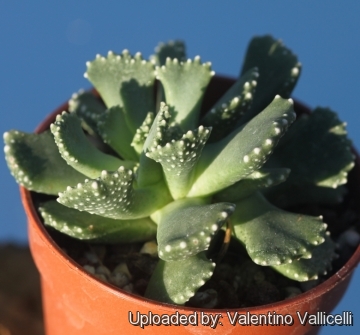
Nananthus malherbei (Aloinopsis malherbei) Photo by: Valentino Vallicelli
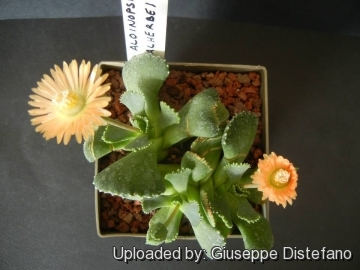
Nananthus malherbei (Aloinopsis malherbei) Photo by: Giuseppe Distefano
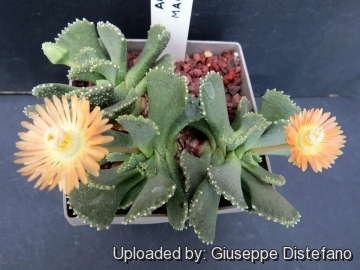
Nananthus malherbei (Aloinopsis malherbei) Photo by: Giuseppe Distefano
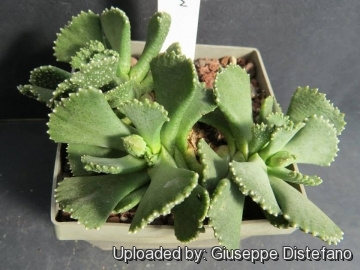
Nananthus malherbei (Aloinopsis malherbei) Photo by: Giuseppe Distefano
Cultivation and Propagation: Aloinopsis malherbeiSN|26971]]SN|26971]] are quite smart for the extremely dry circumstances where these plants grow. But not so difficult to grow if you remember not to over-water in the Summer when they're taking their rest. This is a small plant that is perfect for a window garden, dish garden that will take full sun, little water, the leaves are gray and look like upside down ice cream cones. It may be difficult to find but worth the bother. Outdoors OK only if protected from winter rain. In cultivation they are spring and autumn grower (summer dormant).
Soil: They are tolerant of a wide range of soils and habitats, but prefer a very porous potting mix to increase drainage. You can grow a plant in a 6-10 cm pot for years and have perfectly happy plants. For best results, use a shallow pot.
Watering: It is in theory a winter grower, but the area of origin is so dry that the plants are mostly opportunistic and will grow when they are lucky enough to get water so provide some water all year around. During the winter months, water only when the soil becomes completely dry. Wet soil quickly causes root and stem rot, especially during chilly winter months, but can re-root if taken care of. No water should ever be allowed to stand around the roots. Low ambient humidity is always needed. Roots will rot in ever damp soil.
Fertilization: The plants are fertilized only once during the growing season with a balanced fertilizer diluted to ½ the recommended strength.
Sun Exposure: A sunny position brings out the best colours, it should be protected from too much exposure in Summer. They do not do well in full shade as they tend to etiolate, fall over and rot easily.
Pest & diseases: Aloinopsis are sensitive to mealybugs.
Rot: Rot is only a minor problem with Aloinopsis if the plants are watered and “aired” correctly. If they are not, fungicides won't help all that much. Care must be given in watering, keeping them warm and wet while growing, and cooler and dry when dormant.
Hardiness: Although the plants will survive mild frost if kept dry (hardy as low as -5° C or less) they should be protected from frost to prevent scarring. USDA 9b-12
Use: It is an excellent potted plant great for windowsill culture as well as in rock gardens. Indoors only in brightest position.
Pruning: Remove old leaves from plant base and dead flower spikes only.
Maintenance: Re-establish from cuttings if it becomes untidy.
Propagation: They are easily propagated by the removal of off shoots, remove a lateral shoot and insert the basal part buried in the soil. This shoot should root within a month, and small offshoots will form at the base. They can also be grown from seed.
| Your Actions | |
|---|---|
| Back to Nananthus index | |
| Back to Aizoaceae index | |
 |
Back to Succulents Encyclopedia index |
Privacy stantement - Terms and conditions - How to cite - About us - Feedback - Donate




